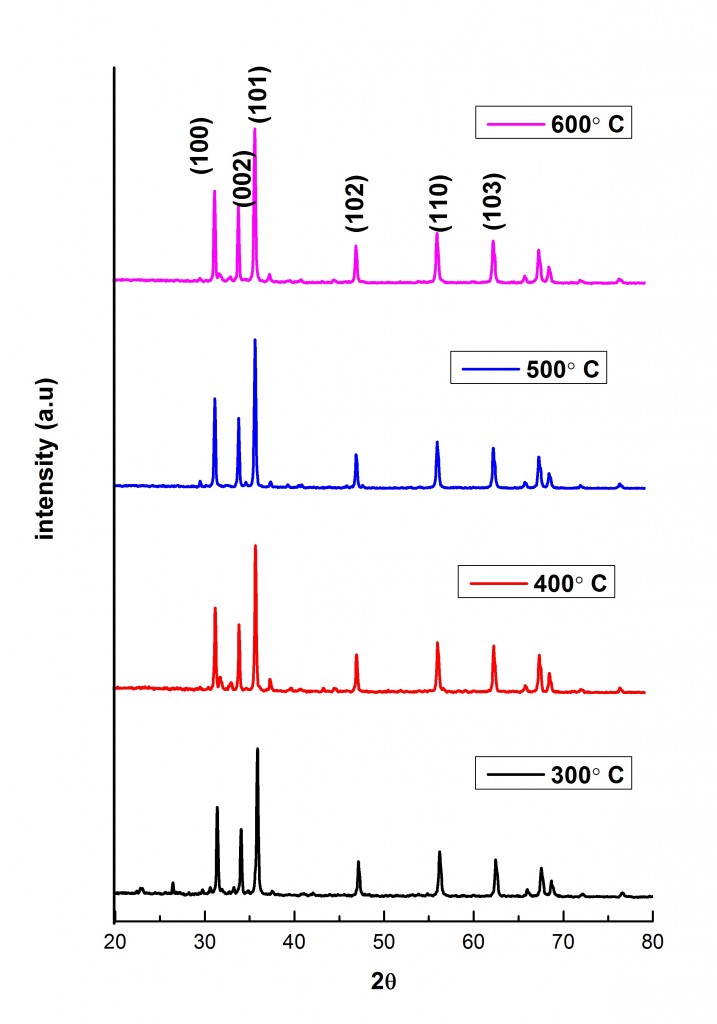NANOSYSTEMS: PHYSICS, CHEMISTRY, MATHEMATICS, 2020, 11 (6), P. 672–679
ZnO nanoparticles as solar photocatalysts: Synthesis, effect of annealing temperature and applications
S. Sathya – PG and Research Department of Physics, Poompuhar College (Affiliated to Bharathidasan University), Melaiyur, India
J. Vijayapriya – PG and Research Department of Physics, Poompuhar College (Affiliated to Bharathidasan University), Melaiyur, India
K. Parasuraman – PG and Research Department of Physics, Poompuhar College (Affiliated to Bharathidasan University), Melaiyur, India
D. Benny Anburaj – PG and Research Department of Physics, D. G. Govt. Arts College (Affiliated to Bharathidasan University), Mayiladuthurai, India
S. Joshua Gnanamuthu – PG and Research Department of Physics, TBML College (Affiliated to Bharathidasan University), Porayar, India; joshuagnanamuthu@gmail.com
ZnO nanoparticles were prepared by a hydrothermal method from the source materials of Zinc acetylacetonate hydrate and ammonium hydroxide. Further prepared samples were annealed at various temperatures for 3 hours. X-ray diffraction analysiswas employed to study the structure and crystalline nature of synthesized nanoparticles. Scanning electron microscope images showed that the prepared ZnO nanoparticles acquired nano needle, hexagonal disk and porous nanorods structures due to the effect of annealing temperature. The photocatalytic activity of the prepared ZnO nanoparticles was evaluated for Methyl Blue (MB) dye which showed 94% of degradation and good stability for five cycles.
Keywords: ZnO, hydrothermal, nanorods, photocatalysis, degradation.
DOI 10.17586/2220-8054-2020-11-6-672-679
